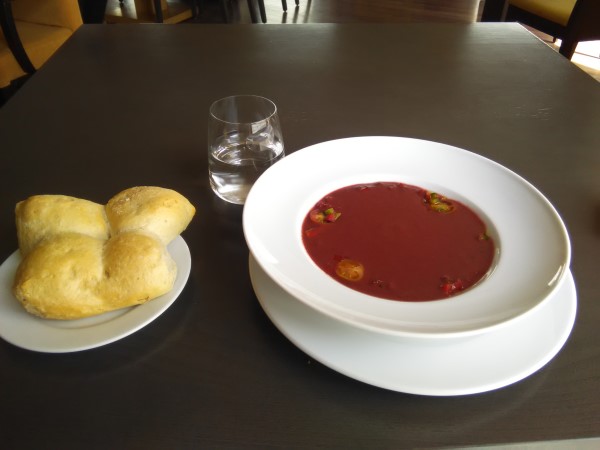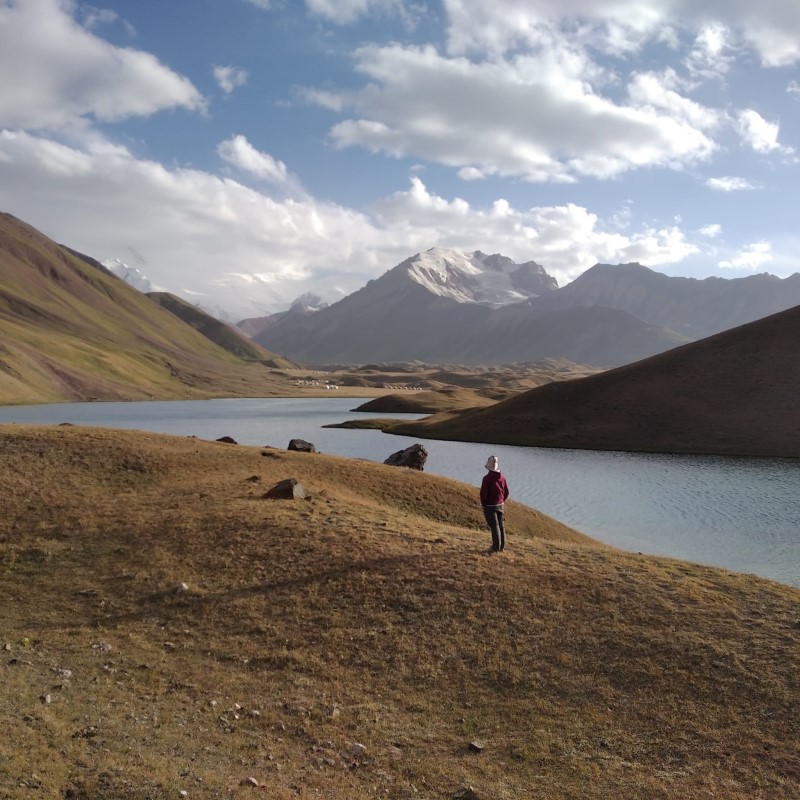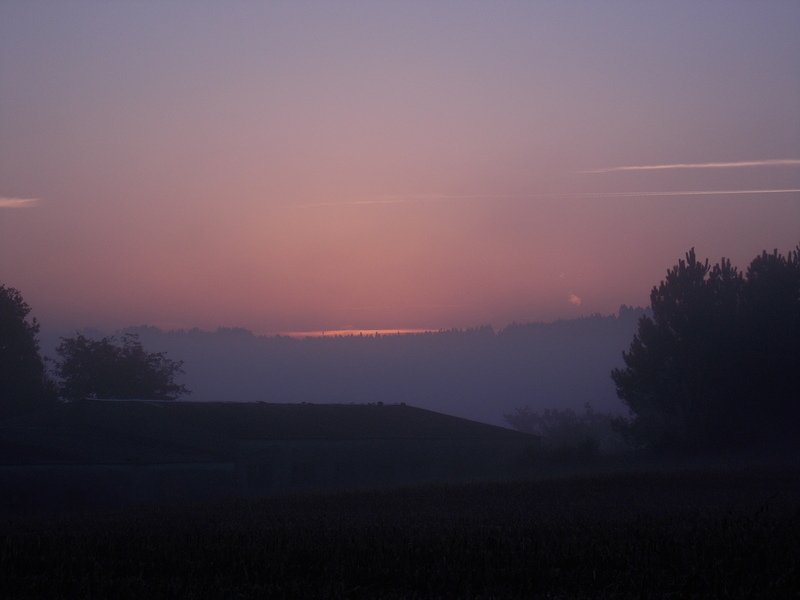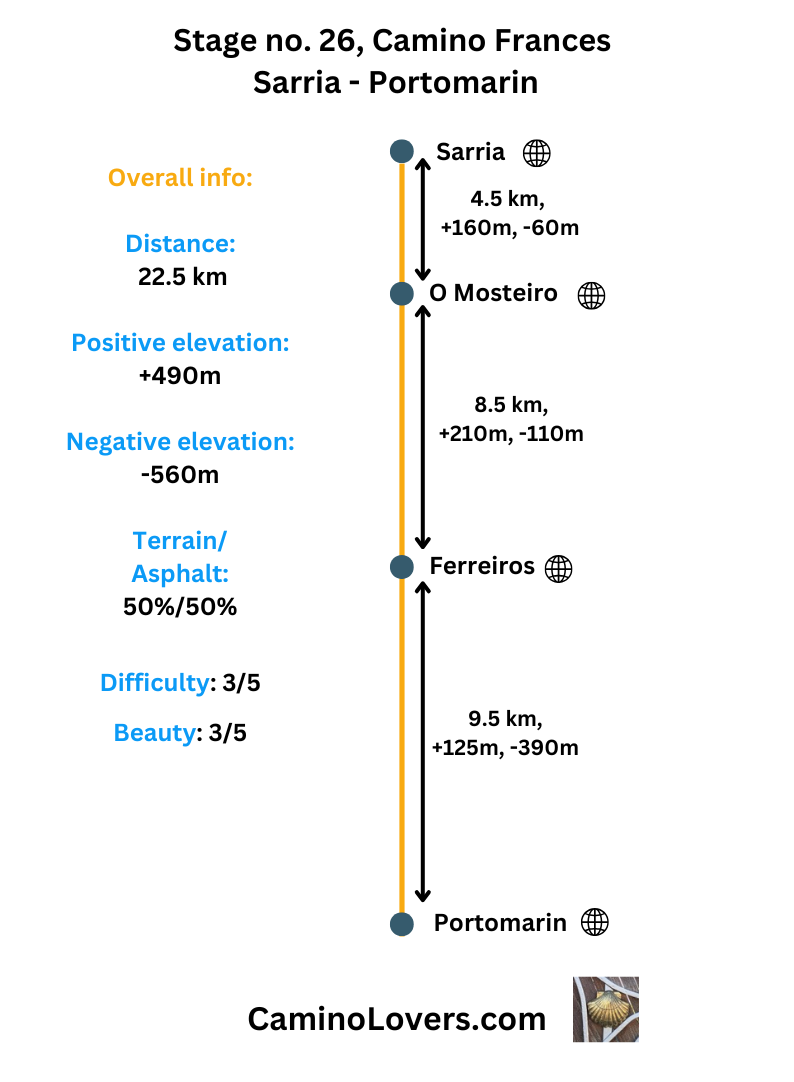
Basic Information
- Starting Point: Sarria, Spain (415m) – The most common starting point of Camino Frances, 115 kilometers away from Santiago. Town that lives from the pilgrimage, with 20 pilgrim hostels, and plenty of other accommodation options for all budgets. Entering Sarria is a shock for many pilgrims who started back in St. Jean or in Pamplona, because in some months of the year the number of pilgrims can multiply ten-fold from here onwards.
- Ending Point: Portomarín, Spain (350m) – A reconstructed medieval town relocated when the Miño River was dammed. With roughly 1,200 inhabitants, the town lives almost entirely from the pilgrims who pass through. Count with 15 pilgrim hostels and some other accommodation options, and all services for pilgrims and tourists.
- Availability of an alternative route: Not really. There is just this EV3 cycling route that also goes from Sarria to Portomarin, avoiding the trail sections of the Camino and always following paved roads. If you’re doing camino on the bike, and want to enjoy some sections where you do not have to ring the bell every five seconds (to warn pilgrims of your quick approach from behind), you may consider taking this route. I mapped it for you here: map of the EV3 from Sarria to Portomarin.
- Distance: 22.5 km (download GPS here).
- Online Map: map.
- Elevation Difference: + 490 m ascent, – 560 m descent.
- Difficulty Score: 3/5 Lot of ups and downs, as it is often the story in Galicia.
- Beauty Score: 3/5 – Classic Galicean countryside with stone villages, many small chapels (some of them open for pilgrims) and nice green landscapes.
- Terrain/Asphalt Ratio: 50% terrain, 50% asphalt, road walking, or right next to the road.
- Next stage: Camino Frances Stage no. 27, Portomarin – Palas del Rei.
- Previous stage: Camino Frances Stage no. 25, Samos – Sarria.
Elevation profile for the route

– As you can see on the chart, you’re going mostly downhill today. But as colors indicate, it won’t be plain sailing, and you’ll have to overcome quite a few steep hills and descents, with gradient surpassing 10% on many occasions. They are short though, and not too demanding on the knees.
Advanced Info About the Stage
- Trail Marking: Extremely well-marked with granite kilometer posts, showing exactly how many meters you have left until Santiago. This can be annoying when one is tired, because sometimes it feels like you had walked for sure at least a kilometer from the last granite marker you looked at. However, inspecting the one you’ve just reached, you see you’ve covered just 400 meters from the last one… Anyway, there’s no way of getting lost on this last stretch. Just follow the crowds, the napkins and toilet paper on the side of the road, the rubbish, and of course the yellow arrows and granite markers :).
- Natural Highlights: The stage passes through nice Galicean countryside, with rolling hills, some “tree tunnels”, and rural settlements. It is a peaceful stage overall, but perhaps the nicest part is the Rio Minho zone in Portomarin, where you can take a swim on a hot summer day. Good zone to do so is for example here.
- Historical & Cultural Highlights:
- The bridge of hope (‘Ponte da Aspera’ in Galicean leangues). A very and well preserved Roman bridge from the 12th century, right after Sarria. Location on Google maps here. There’s typically not much water in the river it crosses, but it is still a nice location with many trees and some history.
- Barbadelo’s 12th-century Church. Beautiful Romanesque church from the 12the century, with nice frescoes and portal. The opening times are a bit of a hit and miss, but when open you can get there also a stamp for your pilgrim passport. Right on the camino, location and reviews on Google maps here.
- Portomarín’s houses and town center. Portomarin is a nice town with unified architecture and harmonious colors. Definitely not worth an extra day off in town, but nice for an afternoon stroll. If you want to enjoy it in peace, however, I recommend you going out in the siesta hours (between 2pm and 4pm), when it isn’t as busy as other times of the day.
- Camping/Bivouac Options: There isn’t any official campsite along today’s stage. With dense farmlands and prevalence of private property, it isn’t easy finding wild camping spots either. One I would recommend though is the Church of Santiago de Ribas de Mino, exactly here. It is about 1.7 km away from the Camino, but close to Portomarin and right next to the river Mino (or Minho in Gallego). The old church is in ruins, and few people venture out there. However, it offers good flat ground to pitch a tent, and also (due to the walls still standing) also some decent hiding spots. Having said all of this, in the highest season on the Camino (in August), many people will just sleep on the ground somewhere in Portomarin, due to the lack of accommodation in town. Police tolerates this in summer.
- Dog-Friendly Score: 3/5. There is enough water and shade along the stage. The problem is livestock and also that you may, sometimes, encounter an unleashed local dog, guarding a door of one of the houses in one of the rural settlements. These dogs are typically friendly to pilgrims (being used to hundreds of them passing by daily), but some of them may not like the vision of another dog in their neighborhood. Quite a few albergues in Portomarin accept dogs, for example albergue El Caminante, albergue Folgueira, or albergue-pension Porto Santiago. Make sure to make a reservation in advance in one of these places, especially if you want to stay with your dog in town.
- Special Remarks: Now you’re already on the last 100 kilometers of Camino Frances. Regardless of the time of the year, the number of pilgrims multiplies on this stretch. It isn’t always a good thing, but since we cannot really change it, it is best accepting it.
My picks for accommodation on today’s stage
- The pilgrim albergue in Ferreiros (km 13.5). A small but clean and decent albergue in the middle of the stage. Ideal to escape the crowds and find a free bed even in the high season on Camino Frances. Opens 1pm, closes 10pm, does not accept reservations. 10 euro/night, 20 beds, microwave, washing and drying machine. 200 meters away there’s a restaurant that offers pilgrim menu for 15 euro. Location and reviews on Google maps here.
- Albergue-Pension Porto Santiago, Portomarin (km 22.5). Considering reviews across all pilgrim platforms, this is definitely the best place to sleep in Portomarin. New and clean facilities, perfectly equipped kitchen, beautiful garden. Only 7 beds in dorm, but has various private rooms toom (including rooms for 4 people). The bed in dorm costs 15 euro. you can make a reservation on the following page, or comfortably on Booking, exactly here.
- Albergue de peregrinos Portomarin (km 22.5). The municipal albergue in Portomarin. 86 beds in 6 rooms, too many pilgrims for such a small place, but it is what it is. 10 euro/night, no reservations. Check-in from 1pm, but in a high season you have to be there before 11:30 to have a chance of getting the bed. Location and reviews on Google maps here.
Pictures from the stage
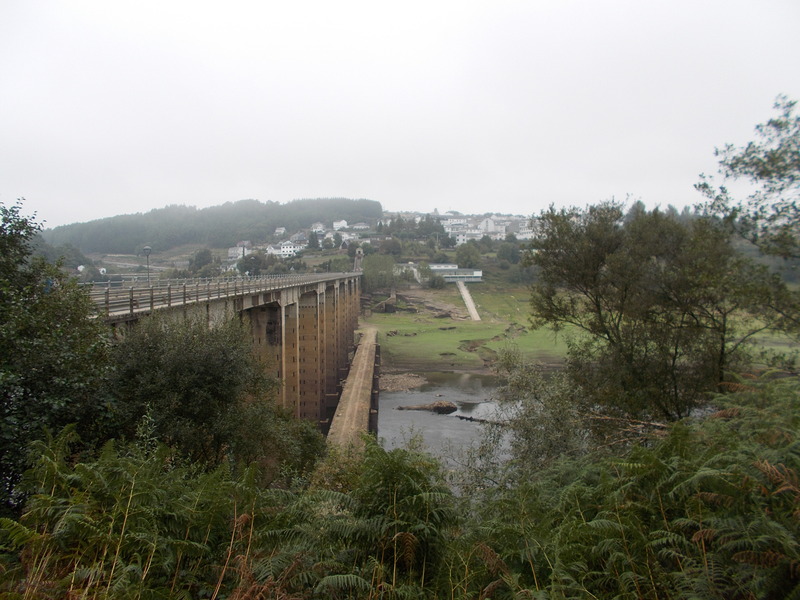
– The bridge leading to Portomarin. Since I walked this stage on a foggy and rainy day (not unusual for Galicia), I didn’t take many pictures. But even from distance you can see the nice architecture of the town, with white houses and dark roofs, so typical for Portomarin.
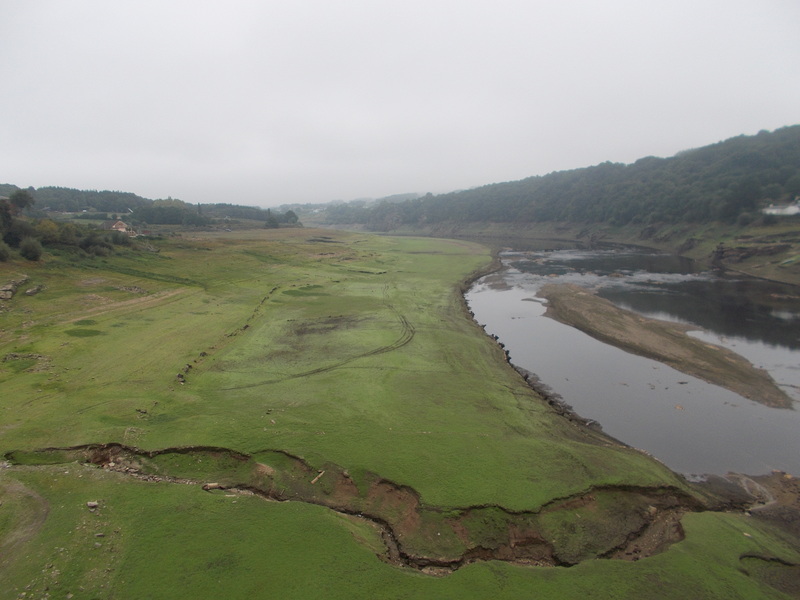
– Even on a foggy day, the river zone in Portomarin is nice.
Few tips at the end
- Start early or late to avoid the crowds. If you follow the stages like 95% of all pilgrims do, you have only two ways of enjoying some solitude and peace on this stretch of the camino. One is starting very early (like 6:30 or even before), and another one starting very late (after 10 or even 10:30). Each of these two scenarios has its problems though. With the first one, you will reach Portomarin super early, and will have to wait a few hours for any albergue to open. With the second one, you need to make a reservation in advance, because arriving late to Portomarin means you won’t find a free bed anywhere.
- Consider sleeping in the middle of the stages. Another way to avoid the crowds, and perhaps make it a bit easier to find a free bed for the night, is to follow an atypical itinerary on the last 100 kilometers on the Camino. Many of these small settlements in-between Sarria and Portomarin have one or two albergues. And while there isn’t much going on except of that, you can always do your shopping and take your lunch in the typical stops, and then simply eat what you bought in the albergue for dinner (if they do not provide one). On this stage, a good point is a municipal albergue in Ferreiros (km 13.5 from Sarria), exactly here. Many times when pilgrims sleep on the streets of Portomarin (due to lack of accommodation), this nice small albergue is half empty…
Next/Previous stage
- Next stage: Camino Frances Stage no. 27, Portomarin – Palas del Rei.
- Previous stage: Camino Frances Stage no. 25, Samos – Sarria.
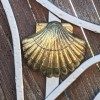


![Ultralight Packing List for Camino de Santiago [2025 Edition]](https://caminolovers.com/wp-content/uploads/2022/03/altra-shoes-640-x-480.jpg)
